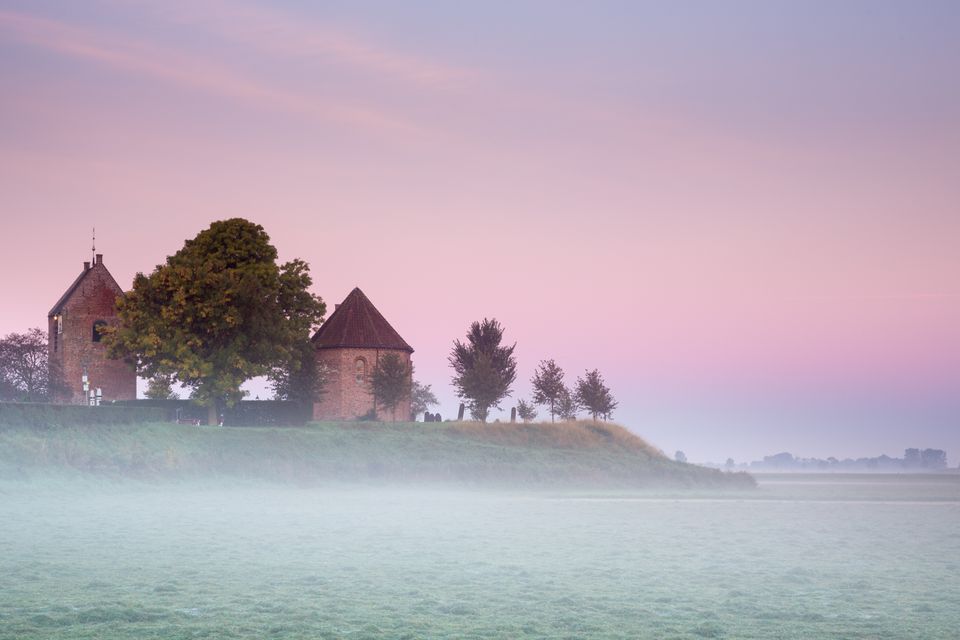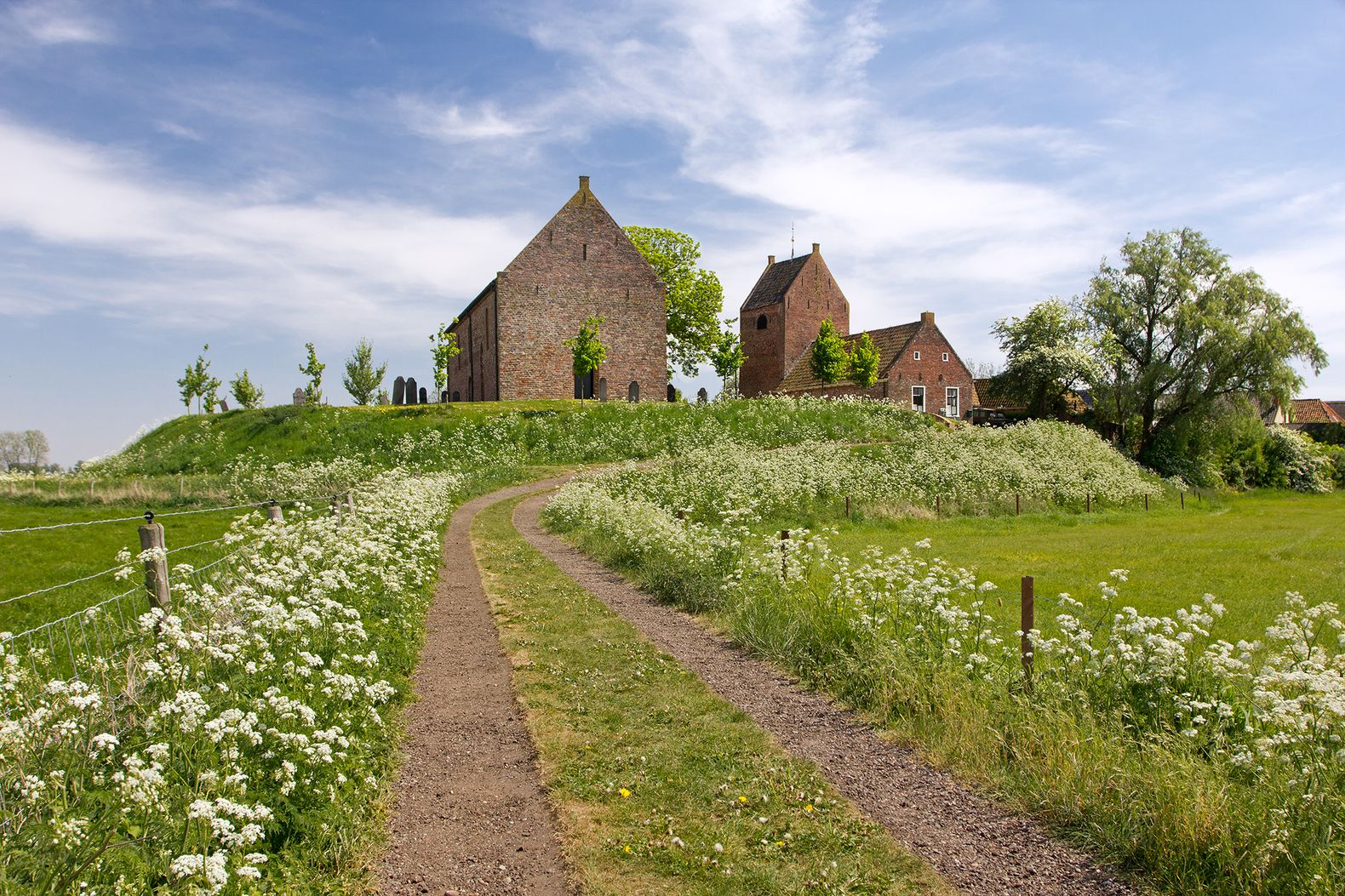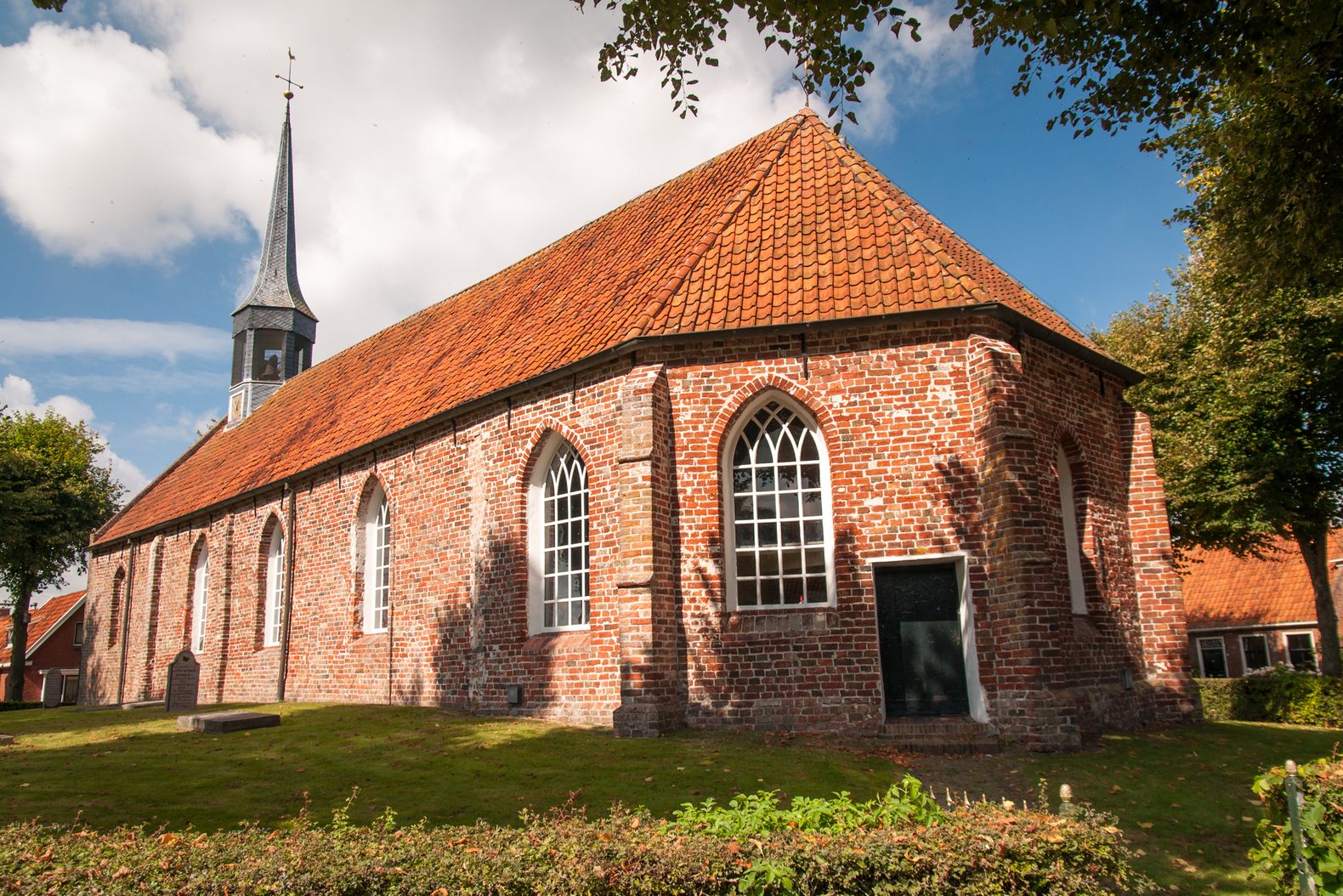Mound villages
Countryside dotted with centuries-old mounds
Groningen as flat as a pancake? Only people who have never been here say that. Journey out into the Ommelanden and you will see villages built on hills all around you. A medieval church stands proud in the centre of the village. Together they form what may well be the most characterful part of Groningen: the mound villages.
Hills chock-a-block with history
The first dikes are only about 1,000 years old. And the people of Groningen were not just going to sit around and wait for them to be invented. They took matters into their own hands and built broad hills, which allowed them to live in areas that flooded regularly. The people of Groningen were truly living high and dry. Many of the mounds have been flattened over the years. The soil was incredibly fertile. A lot of archaeologists were extremely curious about all the objects that had been buried in the ‘wierden’ throughout the centuries. Visit the Museum Wierdenland in Ezinge, a mound itself, and see lots of the tools, bones and waste that have been found so far.
Living landscape
Many mounds have remained intact. And in many areas they have become part of modern-day living. What used to be the centre of the village, including the church on the highest point, is still the village's beating heart with small shops and at least one village café. Winding cobblestone paths lead you down to the lower-lying buildings where you are suddenly surrounded by brand new houses. But time seems to have stood still in some villages. In Niehove, for example, where the narrow church paths between the brick houses follow the exact same spider web pattern as they did centuries ago.







